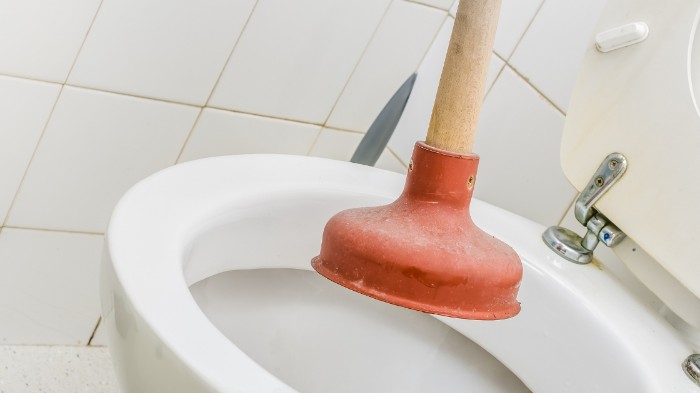You decided to purchase a drill for your DIY creations, or you are a contractor in need of an upgrade. So, how do choose a drill? There are several brands available in the market and all company’s claim that their products are the best.
Here you will get information on all types of drills to help you in making the right choice when acquiring that drill.
When you are purchasing a new drill for any kind of work that you have, there are a few key elements that are supposed to guide you into choosing the best drill.
You have to know the type of materials you are using on the drill and the type of power supply you need for your tool. Here is a guide on how to choose a drill and selecting the best according to work.

1. Types of drill machine — Which & Why
Since there are different types of drills available in the market, you will have to know the exact type of work that you regularly have. Knowing the type of work that requires a drill will help you in selecting the best tool. Here are different types of drills that you can choose from:
I. Drill Press
This is a tool that is used in producing holes in tough substances. The drill is held firmly and fed into a workpiece that is clamped onto a table. This is a professional heavy-duty tool used in general-purpose machine shops.
Other than drilling the drill press can perform other functions such as counterboring, reaming, and tapping of large and small holes.
II. Drill Driver
This is an electric-powered hole maker and a fastener driver used for nuts bolts and screws. The electric tool is fitted with a bit depending on the application and then secured by a chunk.
The electric tool can vary with speed, power, and size. The common application for the use of the drill driver is woodworking and metalworking.
III. Hammer Drill
Hammer drills are a special type of drill whose function is to fulfill the role of pulverizing holes into masonry blocks, bricks, marbles, or similar materials.
The working principle of the hammer drill is hammering blows in the direction of the hole you are drilling. A hammer drill is a tool that makes holes through extremely tough materials.
IV. Impact Driver
This is an electric power tool that is almost similar to a power drill. Just like the power drill, the impact driver can also drive a screw into a dense material; however, the impact driver makes the work easier.
The impact driver works by adding hammering action both downwards and sideways to the rotational motion that regular power drills use.
V. Electric Screwdriver
An electric screwdriver is a versatile hand tool designed to drive screws into the surface of a pre-taped material. Most of the electric screwdrivers are designed to be cordless so that you can be able to move with them freely on your job site.
Compare to a regular drill; the electric screwdriver has way less power. Some brands in the market have a reverse function for unscrewing screws.
2. Cordless or Corded
The problem with choosing a corded or a cordless drill has been a common issue for most contractors as it boils down to choosing between mobility and power. Here you will learn what both forms of power source might affect your work and help you in selecting the best type of drill.
Read: Corded Vs Cordless Drill – Who Is Truly The Best And Why? (Updated)
I. Cordless drill
These are types of drills that use rechargeable lithium batteries. Since the inception of cordless drills into the market, they are the most common type of drill due to their versatility as they are lightweight and easy to use.
They are suitable when working on a site that does not have a direct power source and when the operator moves around a lot when working. if you have to stay away from a power source, a cordless drill can be the best choice.
Also Read: Best Cordless Drill Under $50 In 2021 – Reviews & Buying Guide

II. Corded drill
This is a type of drill that must be connected to a power source to function, because of this, the drill offers more power when using compared to the cordless type. The corded type of drill is engineered to hammer with increased force while working on the material, making it accomplish tasks faster.
if you have to work for a long time without worrying about battery, a corded drill is most convenient.
Read: Best Corded Drill For Home Use In 2021 – Reviews & Buying Guide
3. How to Choose the Best Drill for Your Needs
I. Cost
When you are going to buy a power drill, you need to acquire a cost-effective tool. You wouldn’t need a tool that is extremely powerful while you are doing light jobs with it, buying such a tool will be a waste of your money as you can be able to purchase a lower power tool that will be cost-friendly to your pockets.
Read: Best Corded Drill Under $100 Of 2021 – Reviews & Buying Guide
II. Power
Most of the electric drills’ power range between 500 -1200w. The watt on a drill shows the strength of the power drill. A low-power drill working on its maximum will wear and tear faster compared to a power drill working the same job. When choosing a drill to consider a more powerful one as it will last longer.
III. Speed
The speed of a power drill varies on the size of the drill bits in use by the drill. A larger drill bit will be turning slower compared to a smaller drill bit; otherwise, they may overheat and lose their drilling edge.
Avoid choosing single-speed drills as they lack versatility when operated with different sizes of drill bits.
IV. Volts
Volts or voltage is the available power to the drill. The voltage varies in different types of drills. A higher voltage drill means that that type of drill can perform heavier types of work.
Before you purchase a drill, you will have to evaluate the work to be done with the drill. If it is for a simple home project, a lower voltage drill will be suitable as it will be less costly and lighter.
Read: Best 12v Cordless Drill In 2021 – Reviews & Buying Guide
V. Battery
There are three types of batteries that can be used on a cordless drill which are; nickel-cadmium, nickel-metal hydride, and lithium-ion. The most commonly used on drills are lithium-ion batteries.
You would want to choose this type of option as they will be more available in the market when you need replacement and they are environmentally friendly.
YouTube Video Credit: Meredith Loughran
VI. Reverse switch
A reverse switch is a special type of switch located near the trigger switch whose function is to turn the drill bits backward or forward. You can alternate the rotational motion of the drill by depressing the switch.
The reverse switch has various functions such as removing screws from a material or backing out a drill bit that might have stuck in the material while drilling.
Also Read: How To Use A Cordless Drill: Top 5 Features Explained!
VII. Special direct system (SDS)
This is a special type of drill that is extremely powerful, and you can use it when extra power is needed when doing a heavy-duty job. The special direct system does three functions of normal drilling, hammer action, and chiseling.
The special direct system can hold a larger size drill bit compared to the 13mm normal-sized bit.
VIII. Torque
This refers to the force that rotates an object. High torque on a drill means the more twisting force it will deliver. When choosing a drill, always pick one with multiple toque settings as it will provide versatility based on the task that you will be performing with your tool.
IX. Light
Not all working areas are well illuminated; working on poorly lit areas can be dangerous such as beneath staircases or inside cupboards. Different drill brands have solved this problem by adding an LED light on a drill to help the operator see better while working.
Because the LED light bulbs are tiny, you can position them on the base of the tool above the battery.
X. Chuck
A chuck is a specialized type of clamp that is used to hold on to the drill bit with redial symmetry when drilling. The chuck of the drill is cylindrical and allows switching between bits depending on the project.
There are two types; key and keyless. The key on the keyed chuck has the potential of being lost and as a buyer, you would consider going keyless as it will not derail your work.
Also Read: How To Change A Drill Bit — Change Without Any Hassle
3. Conclusion
Now I believe you know how to choose a drill. Getting the right drill is very important as it will help in the quality of work done. Above is detailed information on how you choose a drill and choosing the best drill according to the work you intend to do.
Before choosing between a corded or a cordless drill always consider various other factors as they will greatly influence you to the right choice.
Finally, when you have summarized what you want in a drill according to the work you have, the decision will come between the choice of mobility or power.
If doing heavy-duty works, a corded drill is a suitable choice for you, and a cordless one is for small tasks. Remember always to choose a brand that is comfortable in your hands while operating.
![How to Use a Drill Press: 6 Steps to Drill Press Mastery[Updated]](https://drill-guy.com/wp-content/uploads/2023/09/How-to-Use-a-Drill-Press-768x432.jpeg)




